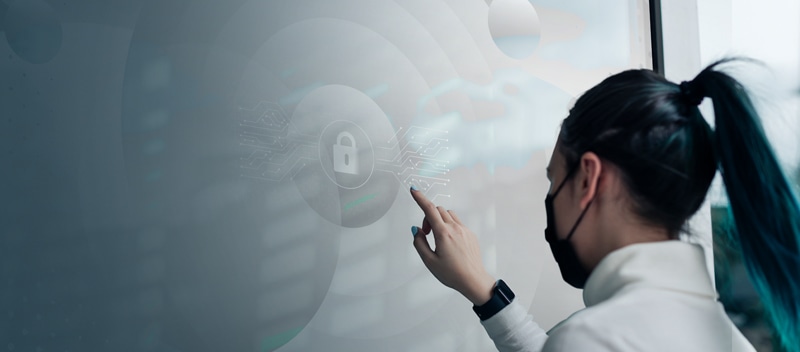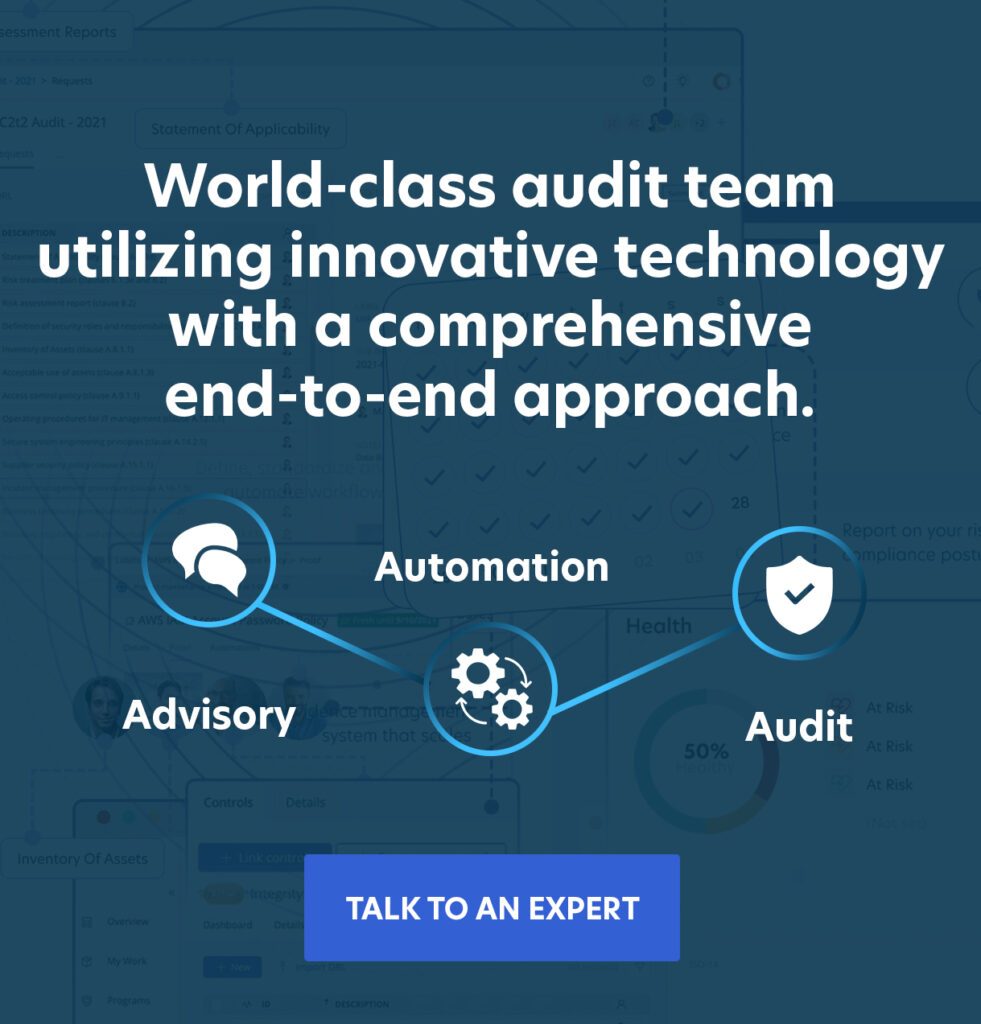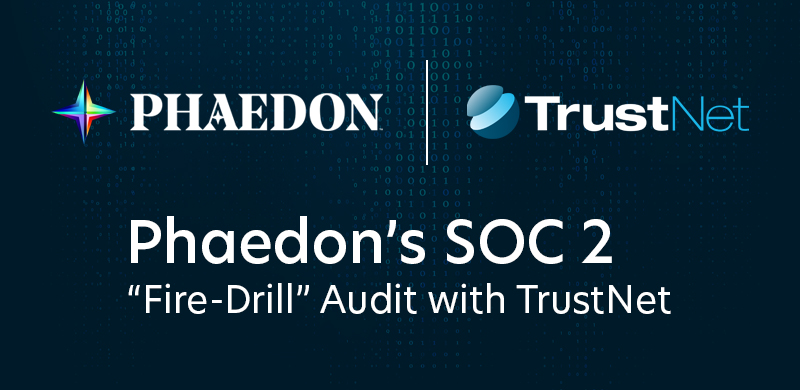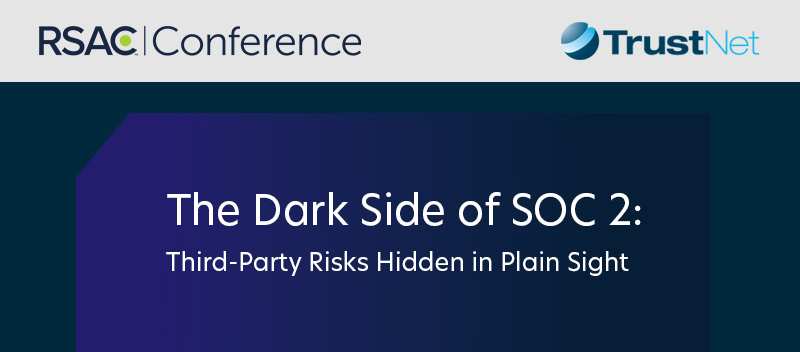7 Methods Used by Businesses to Identify Cybersecurity Risks

Cybersecurity is not merely an industry buzzword or a marketing ploy; it should be a top priority for all businesses, regardless of size. Since digital dangers are constantly evolving, it’s more crucial than ever to protect sensitive data and adhere to legal requirements. Ignoring these risks might have significant repercussions for your business.
But where do you begin? To help, we spoke to seven seasoned business leaders about how they identify and manage cybersecurity risks. Their insights may help you bolster your defenses and stay prepared for the unpredictable challenges of the digital age.
Methods Used by Businesses to Identify Cybersecurity Risks
1. Proactive Strategy and Cultural Integration
“In my experience leading health IT initiatives at Riveraxe LLC, cybersecurity risk management is about proactive strategy and cultural integration. We prioritize understanding the potential vulnerabilities in healthcare data systems by conducting thorough risk assessments regularly. This helps us identify weak points where data breaches might occur.
We implement agile risk-mitigation strategies, often incorporating tools like Model-Driven Design to ensure our tech solutions align seamlessly with organizational needs. For example, when working on an EHR system for a client, we included regular security audits and real-time monitoring to keep sensitive data safe. This proactive approach led to a noticeable decrease in unauthorized access incidents.
Investing in consistent staff training is also crucial. Everyone from developers to administrators is trained to recognize threats and respond effectively. A recent case saw us improving the end-user experience by simplifying security protocols, engaging employees, and thus reducing the chance of human error. This holistic focus on both tech and team makes managing cybersecurity risks comprehensive and dynamic.”
David Pumphrey, CEO, Riveraxe LLC
2. Combine Encryption and Access Controls
“As the CEO of a legal-tech company focused on digital businesses, I’ve seen how cybersecurity risks can impact operations. One effective method we’ve implemented is the combination of encryption and access controls. By encrypting data and using two-factor authentication, we minimize the risk of unauthorized access.
At KickSaaS Legal, we apply strong organizational strategies alongside technological solutions. We conduct regular audits to ensure compliance with GDPR and other regulations, which helps us identify vulnerabilities. Employee training is key; everyone is educated on spotting phishing attempts and handling data safely.
An example that stands out is when one of our SaaS clients revamped their data security protocols based on our recommendations. They implemented robust password policies and conducted regular security training sessions, which led to a 30% reduction in phishing-vulnerability incidents. For any executive looking to manage cybersecurity risks, focus on proactive measures like these and ensure a culture of continuous learning and adaptation in cybersecurity practices.”
Christopher Lyle, Owner, KickSaaS Legal
3. Embed Cybersecurity in Department KPIs
“I can personally recommend building cybersecurity risk management directly into each department’s KPIs. Don’t leave cybersecurity in the IT department—embed it as a part of everyone’s performance expectations. This makes cybersecurity an organization-wide responsibility, where all teams play a part in identifying and preventing risks associated with their function.
For instance, in our finance department, security of data and monitoring for suspicious transactions are the KPIs. We have project-management objectives to ensure the security of client data in every stage of a project. In this way, we are integrating cybersecurity into the process, instead of it being an IT-centric separate challenge. It also helps every department get more intel about threats that are unique to their role and that may not always be apparent.”
Alex LaDouceur, Co-Founder, Webineering
4. Understand Critical Assets and Vulnerabilities
“I prioritize a clear understanding of our organization’s critical assets and potential vulnerabilities. We continuously evaluate these areas by conducting regular risk assessments and closely monitoring any changes in our digital landscape. The key is to maintain a risk-aware culture where every team member understands their role in protecting data and systems, supported by well-defined policies and ongoing training.
I also recommend implementing a layered defense strategy, where multiple controls work together to guard against potential breaches. Collaboration with other departments is essential to ensure that risk management efforts align with our overall business goals. Regular testing of our response plans keeps us prepared for evolving threats, while effective communication of risk insights with leadership and stakeholders reinforces a proactive approach across the organization.”
Christian Espinosa, Founder and CEO, Blue Goat Cyber
5. Conduct Comprehensive Risk Assessments
“In the rapidly-evolving landscape of technology, identifying, assessing, and managing cybersecurity risks has become paramount for any organization. The first step is to conduct a comprehensive risk assessment. This involves identifying critical assets, understanding potential threats, and evaluating vulnerabilities within the system. Regularly updating this assessment ensures that you are aware of new threats and emerging vulnerabilities. I recommend using automated tools for vulnerability scanning combined with manual assessments to provide a thorough evaluation of your company’s risk landscape.
Once risks are identified, the next crucial step is to assess their potential impact and likelihood. Prioritizing these risks allows us to focus on the most critical threats first. Implementing a risk matrix can help in categorizing risks based on their severity and probability, enabling the development of an effective mitigation strategy. Risk assessment should be a dynamic process that evolves with technological advancements and changing threat environments.”
Tomasz Borys, Senior VP of Marketing & Sales, Deep Sentinel
6. Integrate Security into Operational Practices
“I focus on embedding cybersecurity into the core of our operational practices. Instead of treating security as a separate function, we integrate it into every phase of our workflows — from product development to service delivery. This approach ensures that security considerations are part of every decision, helping us anticipate and reduce potential vulnerabilities early on.
I also advocate for scenario-based planning, where we simulate specific threats relevant to our industry. These simulations help us understand how different risks could impact our operations, keeping our response measures practical and rooted in real situations. We use these insights to adjust our risk-management approach as needed, remaining agile in the face of new threats and always ready to act decisively.”
Oliver Aleksejuk, Managing Director, Techcare
7. Pinpoint Critical Assets and Weak Spots
“To tackle cybersecurity risks, I focus first on pinpointing our critical assets and spotting weak spots that could be targeted. Prioritizing these areas means we’re not spreading resources too thin. I also rely on frameworks like NIST to keep everyone on the same page, and regular threat simulations and training keep the team sharp. Open, straightforward communication with execs about risks and what we’re doing to manage them is key to getting the right support and staying ahead.”
Patric Edwards, Founder & Principal Software Architect, Cirrus Bridge
Learn more about our cybersecurity and compliance services. Contact our experts today
Identifying Cybersecurity Risks: A Multifaceted Approach
Identifying cybersecurity risks is a complex process that depends on using multiple approaches to stay ahead of evolving threats. The most effective strategies combine technology, culture, and proactive thinking. Industry leaders emphasize one key takeaway: success comes from blending these elements into a cohesive plan.
Building a Strong Defense
-
- Start with Proactive Assessments: Waiting for a breach to occur isn’t an option. Companies rely on routine risk assessments to highlight weak points in the system. By using techniques like real-time monitoring and frequent security audits, they prevent vulnerabilities from slipping through the cracks.
- Cultivate Cybersecurity from Within: Cybersecurity isn’t just an IT problem. It’s everyone’s responsibility. Embedding security goals into a company’s performance metrics ensures every team is accountable for reducing risks specific to their roles.
- Combine Advanced Tools with Smart Policies: Encryption is a must for protecting sensitive data, but it’s even more effective when paired with strong access controls. It’s a simple yet powerful way to cut down on errors and bolster security.
- Make Cybersecurity Part of Everyday Operations: Instead of treating cybersecurity as a separate task, weave it into your daily workflows. This helps teams understand how specific threats could unfold and ensures they’re always prepared to act decisively.
Why You Need the Right Partner
Here’s how TrustNet supports your cybersecurity goals through our diverse lines of business:
Comprehensive Cybersecurity Services:
TrustNet offers a range of services to address key vulnerabilities, ensuring businesses are prepared for the most complex threats. These include:
-
- Penetration Testing: Simulating real-world attacks to uncover vulnerabilities and address them proactively.
- Cyber Risk Assessment: Delivering a full evaluation of your security posture with actionable insights to close gaps.
- Vendor Risk Management: Ensuring your third-party vendors adhere to the highest security standards, protecting your ecosystem.
- Security Awareness Programs: Training teams to follow best practices and reduce the risk of human error — a top cause of breaches.
Tailored Compliance Expertise Across Industries:
Meeting compliance requirements is no easy task, especially for industries dealing with frameworks like:
TrustNet provides expert guidance to simplify these challenges, helping businesses streamline their efforts and avoid costly penalties.
Elevating Your Strategy with TrustNet’s Flagship Products
To tackle today’s rapidly evolving cybersecurity landscape, TrustNet also delivers cutting-edge solutions through their flagship platforms:
— GhostWatch
A robust monitoring platform that provides complete oversight of your technology infrastructure. Its key features include:
-
- Security Monitoring: Providing 24/7 vigilance to detect vulnerabilities and respond to threats instantly.
- Advanced Threat Management: Combining proactive detection with rapid incident response to neutralize risks effectively.
- Simplified Compliance: Streamlining regulatory adherence for frameworks like SOC and HIPAA while reducing overall effort.
— iTrust
Designed to streamline vendor relations and compliance, iTrust puts actionable intelligence at your fingertips. Key capabilities include:
-
- Vendor Risk Management: Performing in-depth assessments of third-party risks to maintain a resilient vendor ecosystem.
- 360° Assessments: Offering clear visibility into vulnerabilities —inside and out— for a comprehensive security approach.
- Compliance Monitoring: Enabling adherence to critical regulations, minimizing risks, and preserving business integrity.
Even with the best internal strategies, a trusted cybersecurity partner can make all the difference. Experts like TrustNet bring expertise, regulatory knowledge, and an added layer of protection to your defenses. We don’t just keep you compliant — we help you stay agile in the face of constantly shifting threats.
Cybersecurity and Compliance Beyond the Price Tag
When it comes to cybersecurity, cost often feels like the first hurdle in decision-making. While it’s an important factor, focusing solely on price can lead to missed opportunities. The true measure of value lies not just in a solution’s upfront affordability but in its ability to deliver a high return on investment through effectiveness, precision, and long-term impact.
What Really Matters
-
- Deep Compliance Expertise: Navigating the intricate web of regulatory standards requires more than generic solutions. A partner with industry-specific compliance expertise —like TrustNet— offers the insights and strategies needed to maintain alignment with industry frameworks.
- Value for Money: It’s not about opting for the cheapest option; it’s about choosing a solution that gives you the most comprehensive protection. Investing in the right tools and services, no matter the upfront cost, pays off by preventing breaches, avoiding regulatory penalties, and reducing the likelihood of operational disruptions.
- A Personalized Approach: No two organizations are the same, and neither are their cybersecurity requirements. A cookie-cutter approach won’t cut it. By tailoring solutions to your specific needs, TrustNet ensures that your security framework optimally aligns with your operations, offering precision that generic products or service providers simply can’t match.
If you’re seeking a cybersecurity partner that goes beyond just mitigating risks, TrustNet is here to help. Our blend of deep expertise, scalable solutions, and personalized service empowers businesses to achieve not only security but also peace of mind.
Disclaimer: Throughout this article, insights from CISOs, CEOs, and other executives are provided for illustrative purposes. These people may or may not be connected to TrustNet.
Explore how TrustNet can help your organization navigate the complex and evolving digital landscape. Contact our experts today.
Subscribe to the TrustNet Newsletter
actionable cybersecurity strategies, and TrustNet’s cutting-edge solutions.




